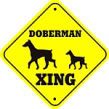| View previous topic :: View next topic |
| Author |
Message |
ginko and co
I've settled in...
Joined: 10 Feb 2007
Posts: 39
Location: if it could be london
|
 Posted: Sun Feb 18, 2007 8:56 pm Post subject: bibroni Posted: Sun Feb 18, 2007 8:56 pm Post subject: bibroni |
 |
|
do you know pachydactylus bibroni?i would like to know some general things about them.are they difficult as rhaco?is it the same about vivs and health?
_________________
thanks for sacrifiing time to answer to a french crested an london life style fan |
|
| Back to top |
|
 |
Scott W
Site Admin

Joined: 15 Apr 2004
Posts: 13355
Location: London, England.
|
 Posted: Mon Feb 19, 2007 9:38 am Post subject: Posted: Mon Feb 19, 2007 9:38 am Post subject: |
 |
|
A very tough little gecko, not really something that is suited to handling tough. I wouldn't compare them to any of the rhaco's in terms of care or behaviour.
Basic care guide below, from a quick internet search for you.
Taken from http://www.wnyherp.org/care-sheets/lizards/bibron-gecko.php
Link to printable PDF http://www.wnyherp.org/care-sheets/lizards/BibronGecko.pdf
Common Name: Bibron's Gecko
Latin name: Pachydactylus bibroni
Native to: Southern Africa, Angola, and southern Tanzania
Size: Bobron's Geckos generally reach 6 inches (15 cm) in length, though they can reach sizes of 8 to 9 inches (20-22 cm).
General appearance: Bibron's geckos generally reach 6 inches (15 cm) in length, though they can reach sizes of 8 to 9 inches (20-22 cm).
Housing requirements:
Enclosure: Bibron's geckos do well in a 20-gallon or larger aquarium. A screen top for the enclosure will help with air circulation.
Temperature: Bibron's geckos are best kept at a temperature of 75° to 85° F (24° to 29° C) during the day, with a 90° to 95° F (32° to 35° C) basking spot. Nighttime temperatures should be 65° to 75° F (18° to 24° C).
Heat/Light: Both UVA and UVB light is recommended for Bibron's geckos and can be provided with proper fluorescent bulbs. Heat can be provided with infrared heat bulbs, basking bulbs, or ceramic emitters. Newer Active UV bulbs now available can be used as well. These self-ballasted bulbs provide UVA and UVB light as well as heat.
Substrate: Various substrates can be used including crushed coconut shell and orchid bark. Both of these will help to maintain a higher humidity level for the Bibron's gecko. Sphagnum moss can also be used to help raise the humidity.
Environment: Because the Bibron's gecko is an arboreal species, live potted or artificial plants can be used to provide a variety of climbing surfaces to climb on. Live plants can also help maintain the 65% humidity level that these geckos prefer.
Diet: As with most geckos, Bibron's geckos are insectivorous. They will eat a variety of insects including crickets, mealworms, superworms, and waxworms. When feeding your gecko insects it is important to gut load them before feeding to the gecko. Regular vitamin supplements applied to the prey can also prove beneficial in moderation as well.
Maintenance: Fresh water should be provided daily. The enclosure should be spot cleaned daily and disinfected regularly. A 5% bleach solution is an excellent disinfectant. Be sure to thoroughly rinse the before placing the gecko back. Regular misting may also be required in order to maintain humidity levels. After handling your gecko or cage accessories it is always important to thoroughly wash your hands.
Other references or recommended reading:
"Rough Geckos." Cyberlizards. Updated 6 February 2001. Retrieved 8 September 2002. <http://www.nafcon.dircon.co.uk/geckos_pachy.html>
"Bibron Gecko Care Sheets." Animal Allsorts. Retrieved 8 September 2002. <http://www.reptileallsorts.com/bibrongecko.htm>
"Bibron's Gecko." Reptile Trust. Retrieved 8 September 2002. <http://www.eawt.org/reptiles/reptiles.asp>
"Bibron's Gecko." PETsMART. 2002. Retrieved 8 September 2002. <http://www.petsmart.com/.../article_3803.shtml>
_________________

Please DO NOT pm orders for reptiles, send email instead scott@captivebred.co.uk |
|
| Back to top |
|
 |
christophermchale
CaptiveBred Addict!

Joined: 30 Apr 2007
Posts: 588
Location: cheapest viagra on the internet!
|
 Posted: Sat May 05, 2007 3:09 am Post subject: Posted: Sat May 05, 2007 3:09 am Post subject: |
 |
|
i have a 1.1 pair in with some adult leopards and they do great actually. the bibrons mainly stay stuck to walls and stay away from the leopards. but occasionally i find them on the sand or laying on top of my leopards in their basking spot.
fast as hell but interesting to looking at, especially when its dinner time.
_________________
cardboard city. |
|
| Back to top |
|
 |
ginko and co
I've settled in...
Joined: 10 Feb 2007
Posts: 39
Location: if it could be london
|
 Posted: Sat May 05, 2007 11:40 am Post subject: Posted: Sat May 05, 2007 11:40 am Post subject: |
 |
|
so if i got you well,you have got 2 different species in a same vivarium?
isn't dangerous to do that?there is no cohabitation possible.
_________________
thanks for sacrifiing time to answer to a french crested an london life style fan |
|
| Back to top |
|
 |
Exalted Gecko
Key Member

Joined: 11 Mar 2007
Posts: 267
Location: Billingham, Teesside
|
 Posted: Sat May 05, 2007 11:56 am Post subject: Posted: Sat May 05, 2007 11:56 am Post subject: |
 |
|
Mmm not to jump on my high horse but the effects of living with a totally different species cant be measured. I would seriously not recommend that.
Obviously your choice an all, just not something I would ever do or recommend to another keeper.
_________________
Kind Regards,
Chris |
|
| Back to top |
|
 |
christophermchale
CaptiveBred Addict!

Joined: 30 Apr 2007
Posts: 588
Location: cheapest viagra on the internet!
|
 Posted: Sat May 05, 2007 12:51 pm Post subject: Posted: Sat May 05, 2007 12:51 pm Post subject: |
 |
|
im not saying that i "highly recommend" it either. but i know in my scenario, it works wonderfully.
_________________
cardboard city. |
|
| Back to top |
|
 |
|






